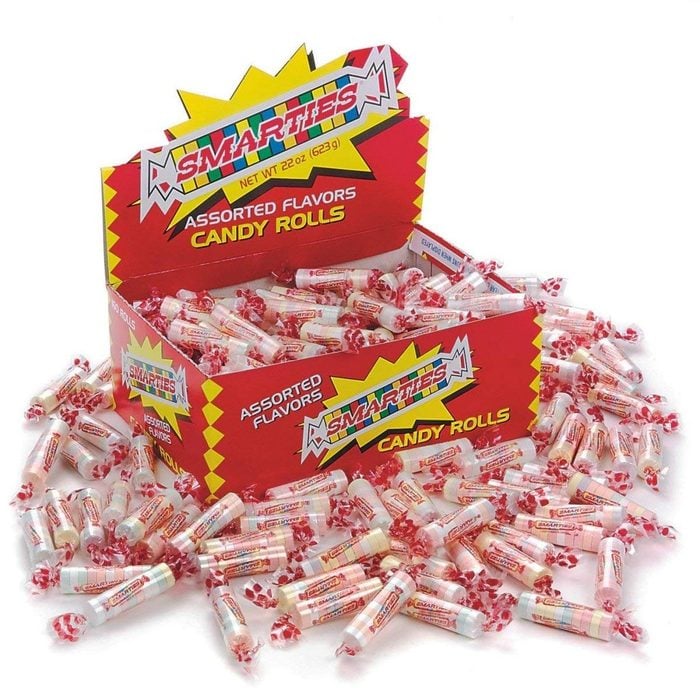
What goes into a Smartie?
The classic roll of Smarties—15 multicolored sugar tablets twizzled up in a clear wrapper with bright red ends—has been in production, courtesy of the Dee family, since 1949. Today, at two factories in New Jersey and Ontario, some 30 billion individual tablets a year are compressed into their concave shape in a punch and die machine from a powdered mixture of dextrose, citric acid, calcium stearate, natural and artificial flavors, and coloring. Co-president Liz Dee walks us through the process from there.
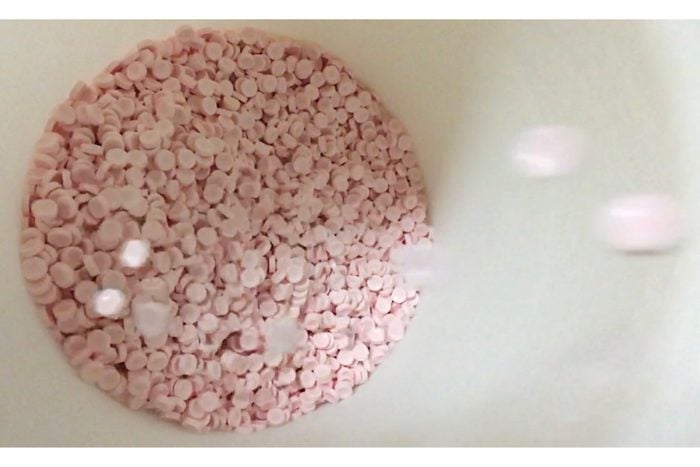
1,000 tablets per minute
The all-dry process of mixing and pressing Smarties happens fast. In the Tablet Room, 1,000 tablets per minute are shot out of the pressing machine from two separate heads. “The six flavors in an original roll are made individually, round-the-clock, and dumped into white buckets,” says Dee.
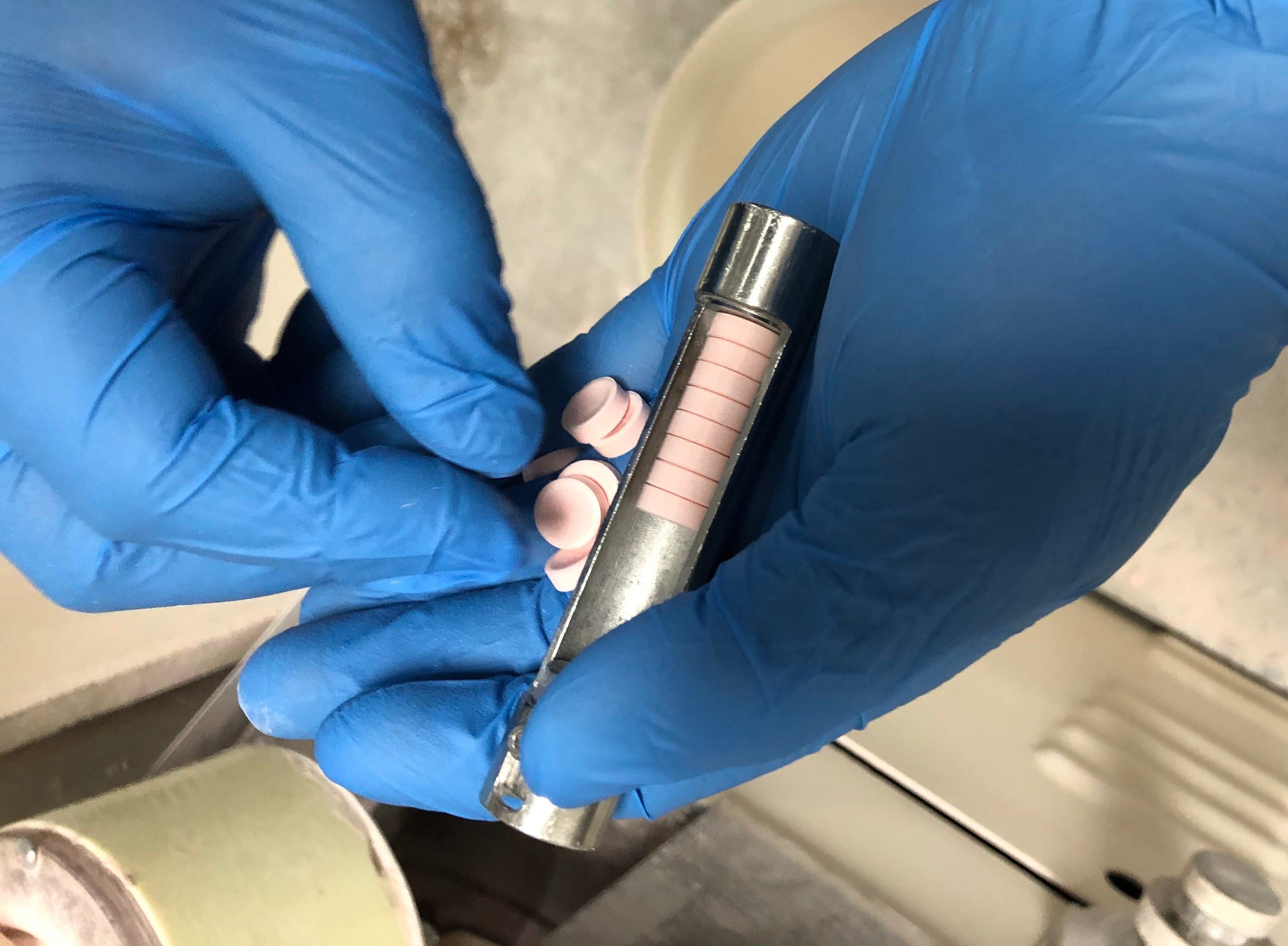
Quality check
A perfectly-sized Original Smartie is 5/16ths of an inch in diameter, and making sure each tablet will stack perfectly in its wrapper is critical. So, workers pull samples while they’re still in the Tablet Room and stick them in a mold. “If they fit the mold, we know they’ll fit in the wrapper,” says Dee.
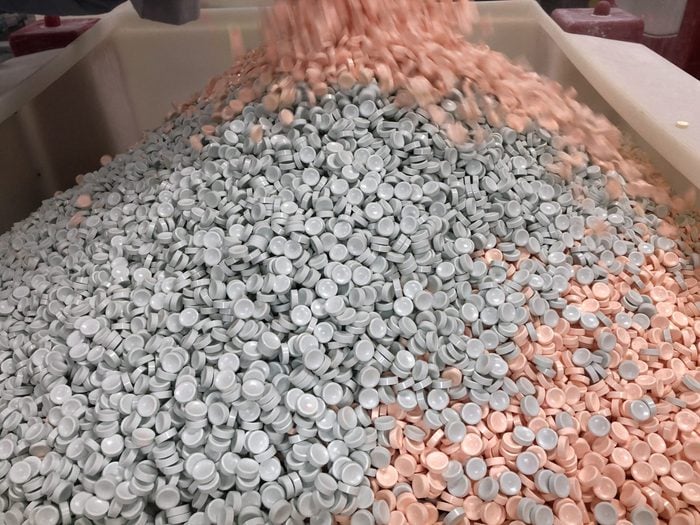
Mixing
The buckets filled with individual flavors of Smarties—most-popular cherry and orange cream (pink and white), grape (purple), orange (orange), pineapple (yellow), and “big shocker” strawberry (green)—are poured into bins that can hold 800 to 1,000 pounds of candy. This is where they’re stirred up to achieve a random mix. Says Dee, “You never can predict what you’re going to get.”
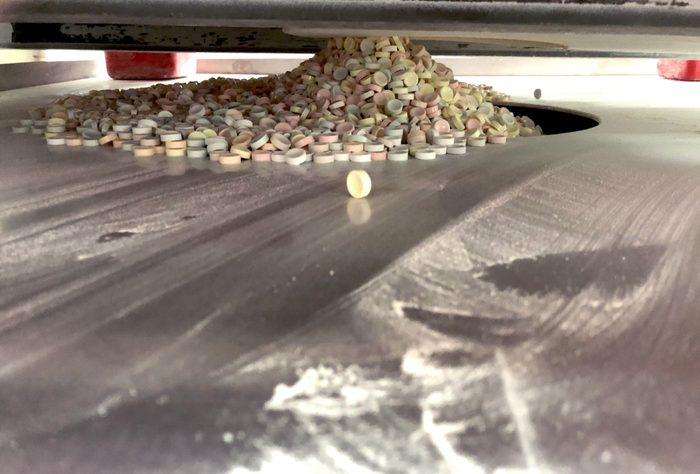
Into the wrapping room
Next, the entire bin is lifted onto a conveyor belt. Its bottom is pulled out so that the multicolored tablets inside fall through the bottom; they’re gravity-fed onto another conveyor that takes them into the Wrapping Room. All this jostling is hard on the candy, Dee points out, which makes it especially important that the ingredients started out ground to just the right size, and pressure, humidity, temperature, and static were also just so back at the start of the tabletizing process. Don’t miss these mind-blowing deals on Halloween candy.
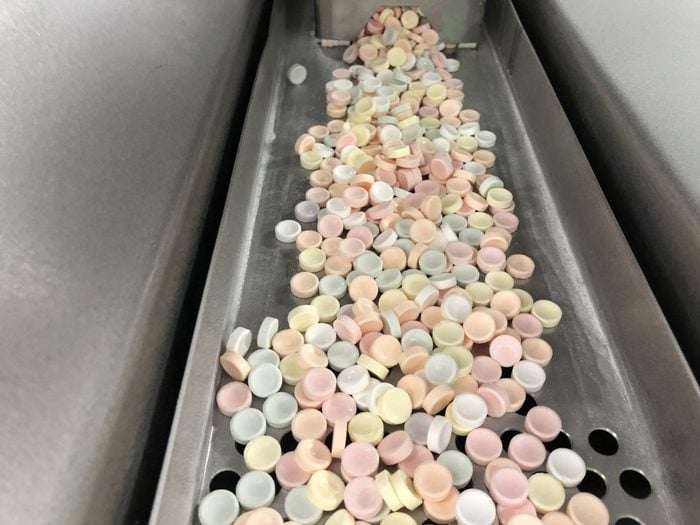
Into the wrapping machine
From the mass heap of candy, the tablets are fed in smaller numbers into the wrapping machine, which is outfitted with sensors that indicate when more tablets need to be fed into it. At the signal, says Dee, “The system unblocks the flow of the conveyor and the candies cascade into the machine.”
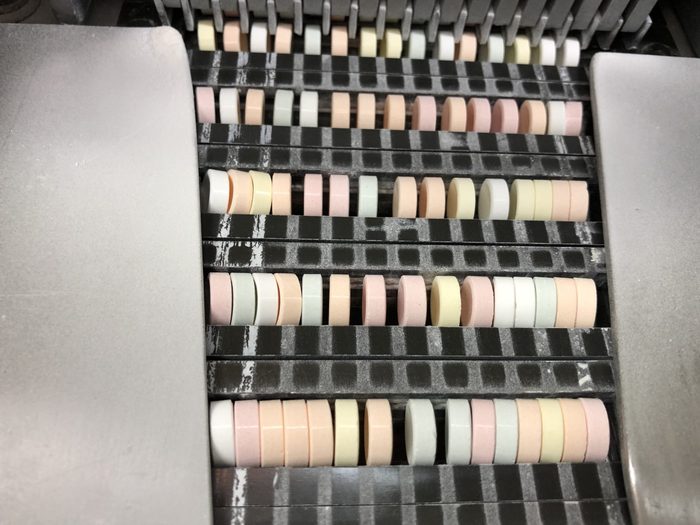
Getting aligned
The tablets at this point are still “jumbled every which way,” says Dee and need to be positioned for rolling. Too few Smarties in the machine and the whole thing shuts down so operators can fix the problem. “What we call ‘good candy’ is candy that runs through the machines without any problems,” Dee says.
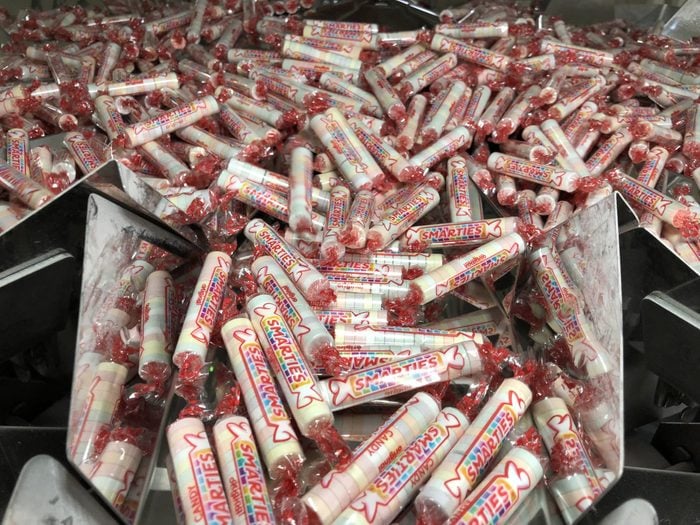
(Almost) ready for bagging
Similar to what happened back in the Tablet Room, the now-wrapped rolls of Smarties are shot out of the wrapping machine into buckets and then poured into bins. The bin is then moved by forklift into the Packing Room and placed on yet another conveyor.
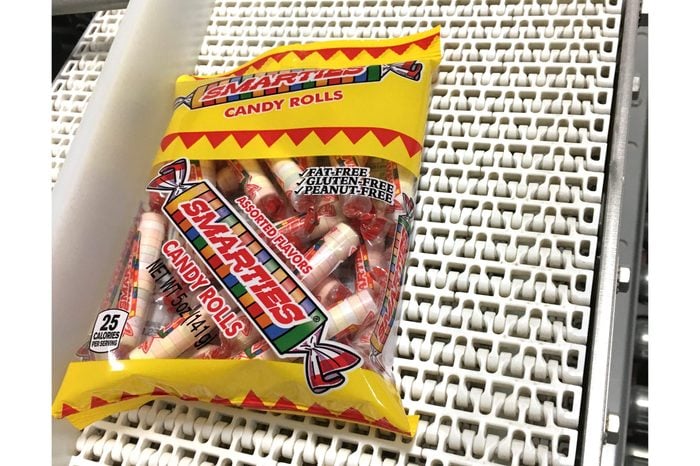
Bagging
According to Dee, most Smarties are purchased in 5-ounce, 12-ounce, or 1-pound bags—the latter of which contains 60 rolls. The bottom of the bin is pulled out from beneath the candy and its all fed by gravity onto a bucket elevator that moves it up and drops it into the Bagging Machine. The system determines when a bag is full by weighing it.
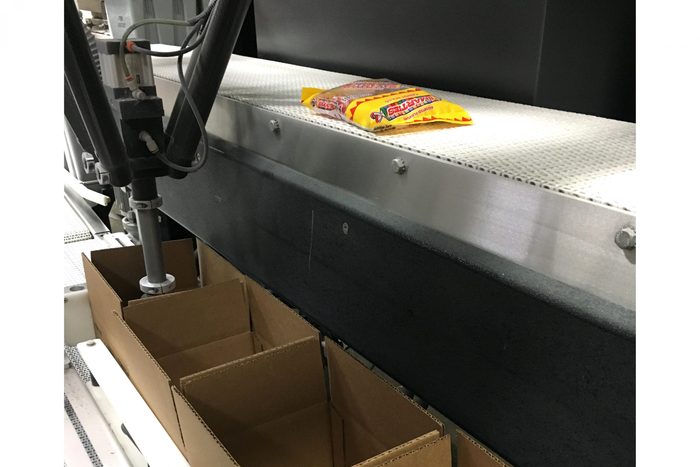
Packing
Bags of Smarties are lifted up by a robotic arm using suction and placed in cardboard boxes. “The machine knows what pattern is needed for bags to fit properly—one pound bags are arranged differently than 12-ounce or 5-ounce bags,” Dee says. They’re taped up, placed on a pallet by a palletizer machine, then moved to the shrink wrap station and on to the warehouse. Hoping to buy a pallet of your own to pass out on Halloween? You need to think at least a year in advance. Big orders for this year’s candy were placed last November.
